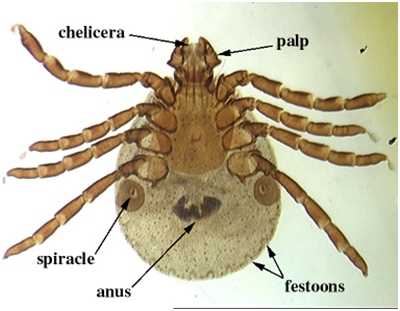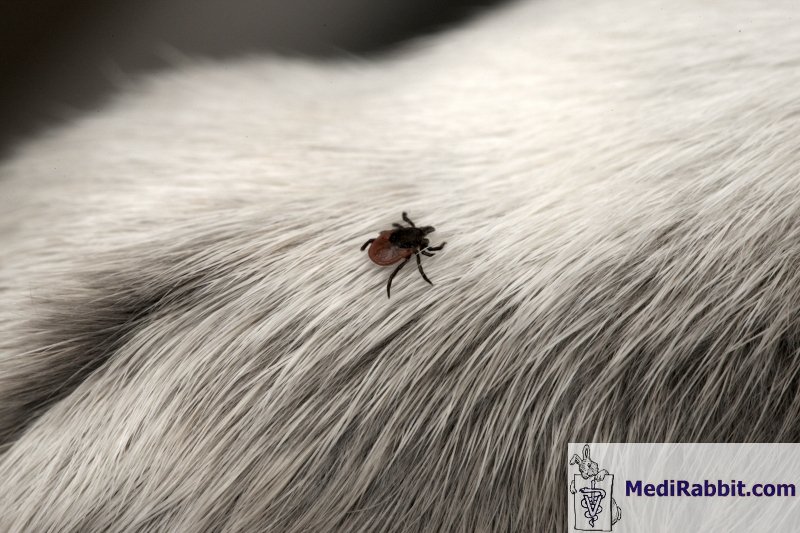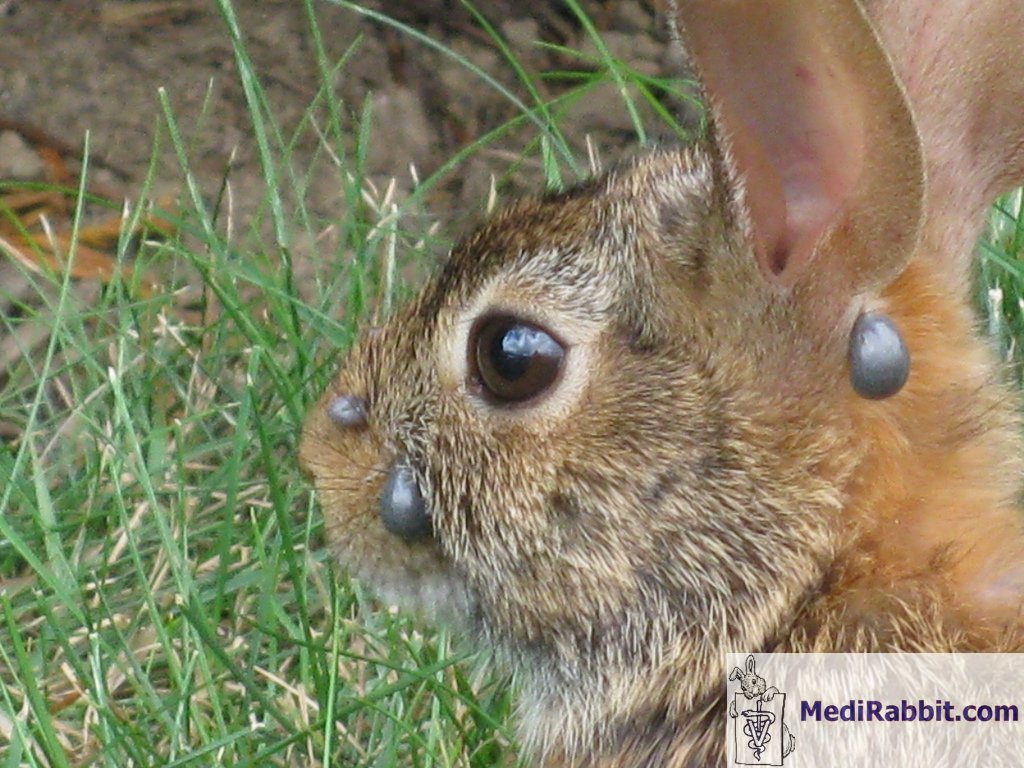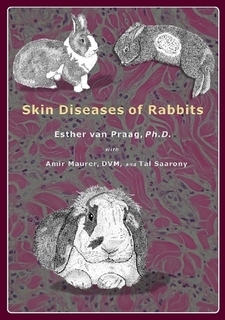Ticks in
rabbits
Esther van Praag Ph.D.
|
MediRabbit.com is
funded solely by the generosity of donors. Every
donation, no matter what the size, is appreciated and will aid in the
continuing research of medical care and health of rabbits. Thank you |
Ticks
plague all members of the lagomorph family, including wild and domestic
rabbits, living indoors. Intermediate stage ticks are indeed light and easily
carried by wind. They can enter a home through windows left open, or ventilators
placed in front of an open window. Ticks can be categorized in two types:
• Ixotid ticks are protected by a hard shield and their
mouthpieces can clearly be seen. They include commonly found ticks all over
the world, like Ixodes sp., Amblyomma sp., Boophilus
sp., Rhipicephalus sp., and Haemophysalis sp. All can affect rabbits.
• Argasid ticks are soft ticks whose mouthparts and “false
head” (capitulum) cannot be seen when viewed from
the dorsal side. They live essentially in arid regions on the American
continent, Africa and India. Members of the Otobius
sp., and Ornithodoros
sp. can plague rabbits.
Ticks
are small (less than 5 mm in length) and have a reddish or brownish color.
Their life cycle is complex. Wild rabbits, cottontails and hares are commonly
plagued by Haemophysalys leporis palustris. This
tick has typically three developmental phases, which occur on three different
hosts. After feeding blood or serum from its host, the tick larva will fall
to the ground, in order to molt. The next stage larva or nymph will find a
new host to feed on. Once adult, the tick will hide in the vegetation. When
it detects the presence of a host thanks to organs sensing its release of CO2
release and body temperature, it will crawl onto its fur and start engorging
with blood. During the feeding, the tick will release saliva and enzymes into
its host, to keep the bite open. During this phase, tick-borne diseases can
be transmitted.
Soft ticks also affect
lagomorphs. The commonly found one is the red tick Otobius
lagophilus. All the larval and nymphal intermediates are found on rabbits, where they
feed on lymph secretions. Soft ticks can be vector for various diseases
affecting rabbits.
Ticks
are implicated in the transmission of viral, bacterial and protozoan diseases
that affect rabbits. These pathogens depend on the regions of the world where
the rabbit lives and the local wildlife. Viral diseases include myxomatosis, rabbit hemorrhagic disease 1 and 2
(VHD/RHD), the Shope papilloma virus, or new emerging diseases such as the West Nile Virus. Pathogen
bacteria include those causing tularemia (rabbit fever), Lyme disease or
Rocky Mountain spotted fever.
In
regions where myxomatosis and VHD1 or VHD2 are
endemic, vaccination of domestic rabbits is highly recommended. Several
vaccines are available. Nobiviac Myxo-RHD
will protect against RHD1 only and myxomatosis. It
will not protect against RHD2. The Filavac and Eravac
vaccines will protect against RHD2. Nobiviac Myxo-RHD PLUS offers protection against RHD1, RHD2 as well as myxomatosis. The availability of these vaccines depends
on the sanitary politics of each country.
Clinical
signs
|
|
daveynin, https://www.flickr.com/photos/daveynin/2755939908/ Cottontail infested with replete (fully engorged with blood) ticks.
Once feeding on blood is finished, the tick will detach itself from its
host and fall to the ground. |
Treatment
As many ticks as possible should be carefully removed with forceps and
killed rapidly by immersion in an acaricide solution, alcohol, or chloroform
solution. This avoids eventual contamination or spreading diseases carried by
the tick host.
If the presence of further ticks is noticed, or if the infestation is
severe, administration of ivermectin (0.400 mg/kg, SC, once) is will
successfully get rid of the ticks.
Although successfully killing ticks, the use of insecticide products
containing pyrethrin, permethrin, amitraz must be avoided, due to their
secondary toxic effects in rabbits. Fipronil is forbidden for use in rabbits.
Severe tick infestation can lead to anemia and death. When observed in
a rabbit, blood transfusion from a healthy rabbit can be attempted.
For detailed information on ticks in rabbits,
by E. van Praag, A. Maurer and T.
Saarony,
408
pages, 2010.
Acknowledgements
Thanks are
due to David Fulmer for the permission to use the picture of an infested
cottontail and to Iris Klimczuk (USA) for her suggestion.
Further
Readings
McGowan MJ.
Relationship between skin-sensitizing antibody production in the snowshoe
hare, Lepus americanus, and infestations by
the rabbit tick, Haemaphysalis leporispalustris (Acari: Ixodidae). J Parasitol. 1985; 71(4):513-5.
e-mail: info@medirabbit.com







